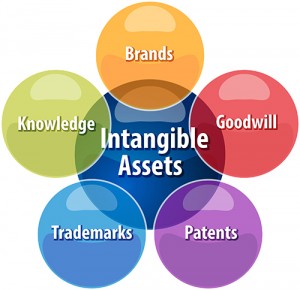
When you buy the assets or the stock of business you may acquire intangible assets such as goodwill if you pay more than the net value of the underlying tangible assets. Under the Internal Revenue Code Section 197 you must amortize these intangible assets over 15 years. Common examples of intangible assets include the following:
- goodwill;
- going concern value;
- workforce in place including its composition and terms and conditions (contractual or otherwise) of its employment;
- business books and records, proprietary operating systems, or any other information base including client lists or other information with respect to current or prospective customers;
- supplier based intangibles such as the existence of favorable distribution relationships or favorable contracts;
- any patent, copyright, formula, process, design or knowhow;
- any government license or permit;
- any covenant not to compete entered into in connection with an acquisition of an interest in a trade or business; and
- any franchise, trademark, or trade name.
After you purchase the company you must allocate the premium paid in excess of the net tangible asset values to the appropriate intangible asset listed above. However, if you can show that the useful life of the intangible asset is less than 15 years you can use that period to amortize the asset. An example would be a covenant not to compete contract with payments made over 5 years. In that example you can amortize the cost of the covenant over the five year contract period as payments are made instead the 15 year statutory period.
If you are considering buying the assets or stock of a company and you need a sales agreement or help calculating the value of the intangible assets please call Gregory J. Spadea of Spadea & Associates, LLC at 610-521-0604 in Folsom, Pennsylvania.







